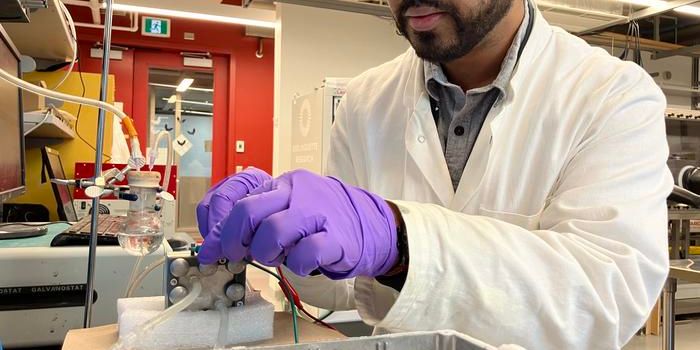"Phase Change Inks" Allow Better Environment Control for Homes, Cars, and Buildings
What if we had a more passive method of heating or cooling down our cars and homes that helped the planet and saved on our monthly energy bills? This is what a team of researchers from the University of Melbourne hope to learn more about as they examined proof-of-concept “phase change inks” utilizing nanotechnology that could be useful in controlling the environment, such as heating and cooling, in homes, cars, and buildings. This study holds the potential to both reduce energy consumption and global greenhouse gas emissions.
“Phase change inks” that utilize nanotechnology in controlling environmental conditions such as heating and cooling. (Credit: Dr Mohammad Taha, University of Melbourne)
For the study, the researchers demonstrated this new “phase change ink” technique could be successful by changing the amount of radiation that passes through the inks based on the environmental surroundings. Dr. Mohammad Taha, who is a researcher at the University of Melbourne and lead author of the study, said this technology could be tapped to make passive heating and cooling successful, thus mitigating our need for creating energy in temperature regulation in an environment.
“Humans use a lot of energy to create and maintain comfortable environments – heating and cooling our buildings, homes, cars and even our bodies,” said Dr. Taha. “We can no longer only focus on energy generation from renewable resources to reduce our environmental impact. We also need to consider reducing our energy consumption as part of our proposed energy solutions, as the impacts of climate change become a reality. By engineering our inks to respond to their surroundings, we not only reduce the energy expenditure, but we also remove the need for auxiliary control systems to control temperatures, which is an additional energy waste.”
Passive climate control presents an opportunity to reduce energy consumption while providing pleasant living conditions, regardless of the environment. One such example is heating during the winter, which building-coated inks would allow more radiation inside while insulating the heat and keeping it warm, with the inks performing the opposite during the summer months.
“Our research removes the previous restrictions on applying these inks on a large scale cheaply,” Dr. Taha explains. “It means existing structures and building materials can be retrofitted. With manufacturing interest, the inks could reach market in five to 10 years. Through collaboration with industry, we can scale up and integrate them into existing and new technologies as part of a holistic approach to tackling the world’s climate change energy challenges. The potential of this material is huge as it can be used for so many different purposes – like preventing heat build-up in laptop electronics or on car windshields. But the beauty of this material is that we can adjust its heat absorption properties to suit our needs. Already, a different type of phase change material is used to manufacture smart glass, but our new material means we can engineer smarter bricks and paint. This new nanotechnology can help retrofit existing buildings to make them more efficient. It’s better for the environment and sustainable for the future.”
What new innovations will researchers make to help reduce energy consumption and greenhouse gas emissions while allowing us to live comfortably in the coming years and decades? Only time will tell, and this is why we science!
Sources: Materials Chemistry, EurekAlert!
As always, keep doing science & keep looking up!









